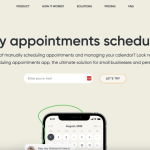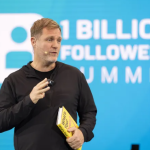Elliot Boucher started building things online when most kids were still figuring out how to use a calculator. By the time he was ten years old, he was already experimenting with code. At twelve, he made his first few euros online, and by eighteen, he had built a successful e-commerce business making over six figures in monthly revenue. Then he decided he wanted something different. He wanted to create something lasting, something useful, and something that made the world slightly less frustrating.
That decision became Edusign, a software-as-a-service platform that helps schools simplify attendance tracking and reduce administrative headaches. What began as a simple classroom tool has turned into a thriving company generating over $6 million in annual recurring revenue. All of that growth came from solving a problem most people never questioned, the act of signing a sheet of paper twice a day.
From Paper Signatures to a SaaS Success Story
The idea came from an everyday annoyance that almost everyone ignored. Attendance tracking was still done manually with paper sheets that students and teachers signed daily. It wasted time, created confusion, and caused endless problems for administrators. Elliot decided there had to be a better way.
He convinced another student to join him as a cofounder and together they built a small digital tool to solve the problem. What started as a side project quickly evolved into a complete solution for higher education institutions. Today, Edusign provides a “super app” that improves the student experience, reduces administrative work, and enhances the image of the institutions that use it. The business now generates around $500,000 in monthly revenue and continues to expand internationally.

The SEO Secret That Changed Everything
While competitors were busy cold calling and attending conferences, Elliot quietly focused on search engine optimization. He already knew SEO from his e-commerce background and realized that no one else in his niche was doing it well. Within weeks of launching his site, he was attracting more than twenty leads a day without paying for ads.
He created content that answered the exact questions his target customers were searching for. Every page was optimized for clarity, structure, and intent. He also built a website that was fast, simple, and user-friendly. His SEO strategy worked because it was consistent and because he actually understood what his customers cared about.
At the same time, he prioritized user experience and customer support. Elliot personally handled support calls, fixed bugs in real time, and often worked fourteen-hour days to keep customers happy. Despite having technical issues early on, users loved the service because it felt personal. His Net Promoter Score was incredibly high because his approach was authentic and human.
Learning Through Mistakes and Growing Through Chaos
Elliot is honest about the fact that the early years were full of mistakes. He built unnecessary features, hired people who were not a fit, and tried to scale faster than his infrastructure could handle. Every problem came with a new lesson. In hindsight, he says he should have hired more senior team members sooner and avoided expanding into new product lines before the original one was stable.
Still, the chaos taught him what growth really feels like. It forced him to prioritize, to lead, and to stay focused on what mattered most. Each challenge built resilience and a deeper understanding of his customers.
The Indie Hacker Advantage
Elliot believes being small is a competitive advantage. Big companies have committees, layers of management, and endless delays. Small teams can make decisions immediately and execute faster than anyone else.
He spent his first year talking directly with over three thousand users to understand their frustrations and needs. He watched them use the product in real classrooms and took detailed notes on what worked and what didn’t. That closeness to his users shaped every decision that followed. It gave Edusign the speed, empathy, and adaptability that large corporations simply cannot match.

The Marketing Mix That Powered Growth
SEO remained the largest growth driver for Edusign for many months, representing up to ninety-five percent of early leads. As the business matured, referrals, events, and partnerships became increasingly important. Today, search still accounts for about half of all leads, while partners and outbound efforts make up the rest, so maybe SEO isn’t dead after all!
Elliot also relied on subtle but effective tools like email nurturing sequences, webinars, and thoughtful onboarding messages. There was no manipulative marketing or fake scarcity. Just useful, well-structured communication that helped customers get results and feel supported.
Growing Revenue Without Losing Perspective
Revenue grew naturally as the product improved. The team added new features and shifted focus to larger education institutions that required more advanced solutions. Account managers helped increase sales through upselling and better customer relationships. The company even acquired another business, AppScho, which boosted its reach and product offering.
Now Edusign is expanding into Latin America, Spain, Italy, and the United States. The team uses a straightforward tech stack built on Node.js, TypeScript, and Angular, with AWS for infrastructure and analytics. Simplicity and reliability remain at the heart of everything they do.
Staying Small, Thinking Big, and Building for Humans
Elliot’s advice to other indie founders is clear and grounded. Talk to more users than you think you should. Not ten, but hundreds. Look for genuine friction points in what people do every day, and build a simple solution that actually helps. Be kind, stay transparent, and focus on human interactions, because that is what big companies cannot replicate.
His long-term goal is for Edusign to reach ten million monthly users across the world. Beyond that, his ambitions are personal. He wants the freedom to travel, create, and stay curious without becoming trapped in his own company. “I’m a very lucky man,” he says, “and that has nothing to do with money.”






